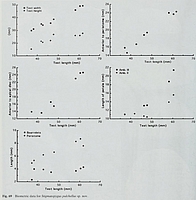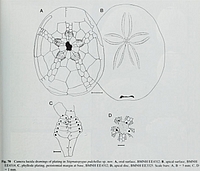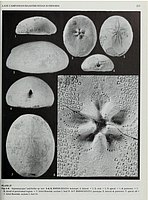Faujasiidae
Lambert, 1905
nomen corr. Kier, 1966, p.508 (pro Faujasidae Lambert, 1905, p.13)
Genre type : Faujasia, d'Orbigny, 1856, p.290
Description succincte de la famille : Système apical monobasal ou tétrabasal, en position plus ou moins antérieure. Périprocte supra ou inframarginal. Bourrelets très développés, phyllodes très larges. Présence de pores buccaux. Pétales égaux, larges et fermés distalement (excepté chez Australanthus). Interambulacre 5 présentant une zone granulaire nue.
|
|
|||||||||||||||||||||||||||
|
|||||||||||||||||||||||||||
| Diagnose originale du genre par Pomel | |||||||||||||||||||||||||||
| Classification méthodique et genera des échinides vivants et fossiles, 1883, p.57 | |||||||||||||||||||||||||||
|
|||||||||||||||||||||||||||
|
|
|||||||||||||||||||||||||||
| Description de l'espèce par d'Orbigny | |||||||||||||||||||||||||||
| Paléontologie française, terrains crétacés, 1854, p.407 | |||||||||||||||||||||||||||
|
|||||||||||||||||||||||||||
| Description de l'espèce par Kier | |||||||||||||||||||||||||||
| Revision of the Cassiduloid echinoids, 1962, p.170 | |||||||||||||||||||||||||||
|
|||||||||||||||||||||||||||
| Description de l'espèce par Wright | |||||||||||||||||||||||||||
| Monograph of the british fossil echinodermata from the cretaceous formations, vol.1, echinoidea, 1878, p.250 | |||||||||||||||||||||||||||
|
|||||||||||||||||||||||||||
|
|||||||||||||||||||||||||||
|
|
|||||||||||||||||||||||||||
| Diagnose originale de l'espèce par Smith & Wright,2000 | |||||||||||||||||||||||||||
| British Cretaceous echinoids, part 5, Cassiduloida, p.439 | |||||||||||||||||||||||||||
|
|||||||||||||||||||||||||||
|
|||||||||||||||||||||||||||
|
|
|||||||||||||||||||||||||||
|
Lambert, 1905, p.13 Genre type : Faujasia, d'Orbigny, 1856
|
|||||||||||||||||||||||||||
|
|||||||||||||||||||||||||||
| Diagnose originale du genre par d'Orbigny,1856 | |||||||||||||||||||||||||||
| Paléontologie française, terrains crétacés, tome VI, échinoides irréguliers, p.314 | |||||||||||||||||||||||||||
|
|||||||||||||||||||||||||||
|
|
|||||||||||||||||||||||||||
|
|||||||||||||||||||||||||||
| Description de l'espèce type par d'Orbigny, 1856 | |||||||||||||||||||||||||||
| Paléontologie française, terrains crétacés, tome VI, échinoides irréguliers, p.315 | |||||||||||||||||||||||||||
|
|||||||||||||||||||||||||||
|
|||||||||||||||||||||||||||
|
|
|||||||||||||||||||||||||||
|
|||||||||||||||||||||||||||
|
|
|||||||||||||||||||||||||||
|
|
|||||||||||||||||||||||||||
| Diagnose originale du genre par Cotteau & Gauthier,1895 | |||||||||||||||||||||||||||
|
Mission scientifique en Perse par J. de Morgan ; études géologiques des échinides fossiles. Volume 3, p.51 |
|||||||||||||||||||||||||||
|
|||||||||||||||||||||||||||
|
|
|||||||||||||||||||||||||||
| Diagnose originale de l'espèce par Cotteau & Gauthier,1895 | |||||||||||||||||||||||||||
|
Mission scientifique en Perse par J. de Morgan ; études géologiques des échinides fossiles. Volume 3, p.52 |
|||||||||||||||||||||||||||
|
|||||||||||||||||||||||||||
| figuré, conservé au Musée National d'Histoire Naturelle de Paris | |||||||||||||||||||||||||||
| figurés in Kier, 1962, Revision of the Cassiduloid Echinoid, p.135 | |||||||||||||||||||||||||||
|
|||||||||||||||||||||||||||
|
|||||||||||||||||||||||||||
|
|||||||||||||||||||||||||||
|
|
|||||||||||||||||||||||||||
|
|
|||||||||||||||||||||||||||
|
|||||||||||||||||||||||||||
|
|||||||||||||||||||||||||||
|
|||||||||||||||||||||||||||
|
|||||||||||||||||||||||||||
|
|||||||||||||||||||||||||||
|
|||||||||||||||||||||||||||

Smith & Wright, 2000, p.435
Genre type : Stigmatopygus, d'Orbigny, 1856
diagnose originale du genre par Holmes, 1995 (courtesy State library of Victoria)
Australian Tertiary Neolampadidae (Echinoidea) : a review and description of two new species. Proceed. Roy. Soc of victoria 107 (2), p.113
|
Genus Actapericulum nov. Etymology. Latin acta, meaning ‘headland’, and periculum, meaning ‘danger’, referring to the locality Point Danger, Victoria, from which the majority of specimens originate. Gender neuter. Type and only known species. Actapericulum bicarinatum sp. nov. Diagnosis. Small, mildly inflated, subcircular to ovoid neolampadids, with concave adoral surface and greatest width and height posterior to centre. Apical system monobasal, with four gonopores and small to moderately sized pierced oculars. Ambulacra with row of single pores in each column from phyllode to ocular. Elongated supramarginal periproct at anterior end of long deep anal groove extending to posterior margin. Peristome longitudinally orientated, anterior of centre with well developed floscelle having clearly defined bourrelets and expanded phyllodes. |
Remarks. The combination of four gonopores and an elongated supramarginal periproct easily distinguishes this genus from other neolampadids. Tropholampas H. L. Clark 1923, the only other neolampadid genus to have four gonopores, is very much smaller and has a highly inflated test, a marginal periproct and, in females, an adapical marsupium. Two other neolampadid genera are recorded as having elongated supramarginal periprocts, Anochanus Grube 1868 and Aphanopora de Meijere 1903; the former, although known only from a single specimen, can be distinguished from Actapericulum gen. nov. by the presence of an adapical marsupium; and the latter can be distinguished by the presence of only two gonopores, a transversely orientated peristome, rudimentary bourrelets and the lack of phyllodes. The presence of a well developed floscelle in Actapericulum could be taken as evidence of a closer affinity with the cassiduloids rather than with other genera of neolampadids. However, the similarity between Actapericulum and the Late Eocene Pisolampas, the Early Miocene Notolampas, and the extant Neolampas in other characters (see Discussion on p. 126) necessitate placement in the Neolampadidae. |
![]()
diagnose originale de l'espèce par Holmes, 1995 (courtesy State library of Victoria)
Australian Tertiary Neolampadidae (Echinoidea) : a review and description of two new species. Proceed. Roy. Soc of victoria 107 (2), p.113
|
Actapericulum bicarinatum sp. nov. Figures 6A-M, 8I-L Etymology. Latin bi, meaning ‘two’, and carinatus, meaning ‘keeled’, referring to the pronounced adoral swelling of interambulacra 1 and 4 . Holotype. NMV P 140924 from the late Early Miocene (Longfordian - ? Batesfordian, Burdigalian - Langhian) Zeally Limestone Member, Puebla Formation, Point Danger, Torquay, Victoria; collected E. Holmes, September 1994. Paratypes. NMV P73689-P73703, P73710-P73724, PI40925, PI40926 and PI40929 from the same member/horizon and locality as the holotype; NMV P73683 from the Early Miocene? of the Early Oligocene-early Middle Miocene Gambier Limestone, Mt Gambier, South Australia; NMV P73684-P73688 from the Early Miocene (Longfordian-?Batesfordian) Gambier Limestone, near Nelson, Victoria; and NMV P73704-P73709 from the Early Miocene (Longfordian) Mannum Formation, near Bow Hill, South Australia. Other material. Two specimens (FCH1 and FCH2) from the Early Miocene (Longfordian) Mannum Formation, near Bow Hill, South Australia, in the author’s private collection. Diagnosis. As for genus. Fig. 5. Comparative drawings of Late Eocene neolampadids in adapical (A, E, I), adoral (B, F, J), posterior (C, G, K) and lateral (D, H, L) views; x 3 . Pisolampas concinna Philip, A -C , NMV P140927 (9 ) from the Kingscote Limestone, Kingscote, Kangaroo Island, South Australia; and E-H , NMV P73839 (?9 ) from the Muloowurtie Formation, Muloowurtie Point, Yorke Peninsula, South Australia. Aphanopora? bassoris sp. nov., I-L, NMV P 140922 (9 ) from the Kingscote Limestone, Kingscote, Kangaroo Island, South Australia. Broken lines and arrows on lateral views indicate centre of apical disk (ad), periproctal recess (pp) and peristomal recess (ps). Fig 6 Actapericulum bicarinatum gen. et sp. nov. All figures x 3.2 unless otherwise stated. A, L, M, NMV P I40925 (?o*), adapical view; detail of primary tubercles (x30); detail of adapical interambulacrum ( x l 2). B C I holotype NMV P140924 (a ), adapical and adoral views; detail of apical system (x 12). D, E, NMV P73685'(o*) posterior and lateral views. F, NMV P140929 (9 ), detail of apical system (xlO ). G, NMV P73691 (9 ) ’adapical view. H, K, NMV P73689 (?), adoral view; detail of floscelle ( x 8). J, NMV P140926 (o-) detail of apical system plate structure (x 12). NMV P73685 from the Early Miocene Gambier Limestone, Nelson, Victoria; all others from the Early Miocene Zeally Limestone Member, Puebla Formation, Torquay, Victoria. |
Description. Test small, specimens ranging from 9.6 to 16.4 mm in length (mean = 13.5 mm, SD = 1.9, N = 31), subcircular to ovoid in outline at the ambitus with slightly truncated posterior margin indented at base of anal groove. Maximum width 80-93% TL (mean 87.2%, SD = 2.7, N = 27) occurs 50-57% TL from anterior ambitus (mean = 53.4%, SD = 1.7, N = 27). Aboral surface mildly inflated, gently curving upwards from a well rounded anterior margin to reach a maximum height of 42-53% TL (mean = 48.6%, SD = 3.4, N = 17) between 51-59% TL from anterior ambitus (mean = 54.9%, SD = 2.8, N = 15). Posterior of the apex the aboral surface is more steeply curved, some specimens tending to be obliquely truncated in the vicinity of the anal groove. Transversely the aboral surface is evenly convex. Adoral surface flat or mildly depressed centrally with interambulacra 1 and 4 swollen below the ambitus to display a concave profile viewed anteriorly or posteriorly and a convex profile viewed laterally. The ambitus, anteriorly and laterally, is situated at about 30% of the test height (TH) above the lowest point (base of swollen interambulacra) rising to about 38% TH posteriorly. Both aboral and adoral surfaces of test covered with small closely spaced sunken crenulate and perforate primary tubercles (Fig. 6L). Apical system slightly anterior of centre, 43-50% TL from anterior ambitus to centre (mean = 47.0%, SD = 2.1, N = 22), monobasal with four variably situated gonopores, anterior pair closer together than posterior pair. In the few male specimens where the plate structure can be observed, the four gonopores occur within the interambulacra on or close to the interradial sutures but generally in contact with the apical disk. However, in at least two specimens, two or more of the gonopores have migrated to the distal suture of one or other of the first pair of interambulacral plates and in another even into the second pair. Distinct dimorphism is present, female gonopores being very much larger than those of male specimens of similar size. Ocular plates variable in size, perforated by a single pore and generally in contact with the genital disk. Hydropores centrally located, usually between seven and ten in number but as many as fifteen may be present. Ambulacra simple adapically, narrow, with row of small single pores in each column extending from phyllode to ocular, each pore situated adradially on, or immediately adjacent to the transverse suture between adjoining plates (Fig. 6M). Primary tubercles on ambulacral plates increase progressively in number from one in plates close to oculars to about six in plates at ambitus of large specimens.
|
| Actapericulum bicarinatum sp. nov. HOLMES,1995, Australie du Sud, Miocène, 13 mm |

Description du genre par Kier
Revision of the Cassiduloid echinoids, 1962, p.151
|
Genus AUSTRALANTHUS Bittner Australanthus Bittner, 1892. Sitzungsb. Kais. Akad. Wiss., vol. 101, p.350. Type species by original designation, Cassidulus longianus Gregory. Medium size, oval, mederately inflated ; apical system monobasal ; petals short, broad, open, strongly conjugate, with equal poriferous zones, ambulacral plates beyond petals single pored ; periproct supramarginal, longitudinal, narrow ; peristome pentagonal ; bourrelets very prominent, sharply inflated ; phyllodes single pored with few pores ; buccal pores present ; adorally tubercles much larger, except for wide naked zone in interambulacrum 5. Comparison with other genera. - Australanthus is similar to Hardouinia in having an inflated test, a supramarginal periproct, prominent, pointed bourrelets, and phyllodes with few pores. It differs in having a monobasal apical system. Mortensen (1948, p222) considered Australanthus congeneric with Procassidulus and maintained Procassidulus even though it is junior. Mortensen was not aware tha Rhynchopygus lapiscancri, the type species of Procassiculus has a tetrabasal apical system which immediately distinguishes it from A. longianus. Furthermore, its test is much smaller, and its petals and bourrelets much less developed. |
Lambert and Thiéry (1921, p.363) refer four other species to Australanthus, all from the Senonian. One of them, Gabb's Cassidulus micrococcus, is a Hardouinia. I have not seen any specimens of the other three species, but according to Stoliczka's (1873, pp.31, 32) descriptions of his Cassidulus crassus and C. emys their apical systems are tetrabasal, and therefore these two species should not be referred to Australanthus. The fourth species, Cotteau's Cassidulus munieri, is supposed to be Senonian according to Lambert and Thiéry, although Cotteau (1887, p.515) says it is from the Lower Eocene. It resembles Austalanthus, but without seeing specimens of it and without knowing the structure of its phyllodes, I hesitate to refer it to this genus. Range and distribution. - Upper Eocene of Australia.
|
![]()
diaganose originale de l'espèce type par Gregory,1890
Some Additions to the Australian Tertiary Echinoidea, p.2 [481]
|
Fam. Cassidulidae. Gen. Cassidulus, Lam. 1801. Cassidulus longianus, sp. nov. PL XIII. Figs. 1-3. Outline from above elliptical, somewhat pointed anteriorly. Abactinally it is evenly rounded ; the vertex slightly precentral. Actinal surface slightly concave with the mouth in the centre of the depression. A wide median bare band runs backward from the mouth. Apical system at vertex. Five radial and four basal pores. Madreporite large, occupying whole of centre of the system. Ambulacra. — Petals sublanceolate ; flush; open below; pores yoked. The single pores of the extrapetaloid plates are on the adoral margin. Petals nearly equal : the posterior laterals are slightly narrower and less lanceolate than the anterolateral. Peristome anterior : at deepest part of the slight actinal depression. Floscelle very prominent. Phyllodes very narrow at oral end, but expanding into wide areas with five pores in the outer row of each side. Bourrelets very prominent. Mouth pentagonal. Anus long, narrow and oval ; situated at upper end of a long narrow groove, which however barely influences the posterior margin.
|
Cassididus has not previously been described from the Australian Tertiaries. The genus is mainly Cretaceous, but a few species occur in the Eocene. Cassidulus longianus is a well-marked species : the bare median band, one of the features of the subgenus Pygorhynchus, the long anus and short petals form a series of characters to be met with in no other species of the genus. It most resembles some of the United States Cretaceous forms such as C. subquadratus, Conrad. planche XIII (extrait)
|
Description de l'espèce type par Kier
Revision of the Cassiduloid echinoids, 1962, p.151
|
DESCRIPTION OF TYPE SPECIES AUSTRALANTHUS LONGIANUS (Gregory) Plate 27, figures 1-4 Cassidulus longianus Gregory, 1890. Geol. Mag., n.s., dec. 3, vol. 7, No. 11, p.482, pl. 13, fig. 1-3. Material. - Four specimens studied in the British Museum (Natural Histoy), two in the Lambert Collection, Sorbonne, Paris, and eight in the U.S. National Museum. Shape. - Medium size, up to 50 mm. long, oval with smoothly rounded marginal outline, steep sides, slightly flattened adapical surface, with greatest width and height posterior to center. Apical system. - Anterior, monobasal, large central area perforated with madreporic pores, oculars small. Ambulacra. - Petals open, short, extending between one-half and two-thirds distance to margin ; petal III longer than paired petals ; interporiferous zones slightly narrower than poriferous zones ; pores strongly conjugate, outer pore very elongate transversely, inner pore slightly elongated. All petals flush with test. Suture between ambulacra plates passing through pores. Poriferous zones of same petal of equal length. |
Adoral interambulacra. - Single large plate in each interambulacrum at peristome, preceded by pairs of slightly alternating plates of nearly equal size. Periproct. - Supramarginal, midway between apical system and margin, opening very narrow, longitudinal, in a long narrow groove extending to posterior margin. Peristome. - Anterior, pentagonal, width equaling height. Floscelle. - Bourrelets very prominent, sharply inflated, toothlike. Phyllodes depressed, widened, single pored, very few pores, four in each outer series, only one occluded pore in each phyllode, occurring in right half-area in ambulacrum III, anterior in ambulacrum II and IV, and posterior in I and V ; buccal pores present. Tuberculation. - Tubercles much larger adorally, with bosses eccentric anteriorly in large, dep scrobicules ; naked area in interambulacrum 5, ambulacrum III. Occurence. - Upper Eocene of Australia. Location of type specimen. - British Museum (Natural History).
|
| Australanthus longianus (Gregory, 1890), Eocène supérieur, Victoria, Australie, 23mm |
![]()
diagnose originale de l'espèce type par Gregory,1892
Further additions to australian Fossil Echinoidea, p.3 [435]
|
Family, Cassidulidae. Genus, Cassidulus, Lamarck, 1801. Systeme des Animaux sans Vertèbres. 1801. p. 348. Species, Cassidulus florescens, n. sp. PI. XII Figs. 2-4. Floresco, to begin to blossom, referring to the imperfectly developed floscelle. Diagnosis.—Outline seen from above elongated, tapering to the anterior end ; the greatest width is at the distal end of the posterolateral petals. The margins are long and fairly straight. The ends are well rounded. Seen from the side it appears evenly rounded, except for the flattened posterior slope. The ambitus is tumid. The actinal surface is concave; the peristome occurs at the summit of the depression. The median bare band is imperfectly developed. Apical system : before the vertex. A large central madreporite and four genital pores. Ambulacra : Petals sublanceolate, flush ; open below. The anterior is the longest. The antero-lateral pair is considerably shorter than the postero-lateral pair. Peristome : anterior. Floscelle not well developed ; the bourrelets are massive, but not prominent. Mouth pentagonal. Anus oval : broad and large. The subanal groove shallow, short and broad. Distribution.—Fyans Ford Hill, Moorabool Eiver; 11/2 miles N.W. of Geelong. Middle Murravian. (Upper Eocene.) Type.—Brit. Mus. E. Presented by T. W. Eeader, Esq., F.G.S. Affinities and Differences.—This species is most clearly allied to the Lutetian (Upper Eocene) Cassidulus faba, Defr. The most important difference between them is in the structure of the petals : these are longer and almost entirely closed in the French species, whereas in the Australian form they are almost open ; the anus is also longer and narrower and the test higher. Its shape resembles that of Echinobrissus vincentinus, Tate, but there is no reason to doubt the accuracy of Prof. Tate's generic determination. |
As the species is associated at Fyan's Ford with Sarsella forbesi (Woods and Dunc.) Monostychia australis, Laube, and a specimen which is probably a young Cassidulus (Australanthus) longianus, Greg., there can be no doubt of its age. The reference to the last named species necessitates the consideration of the genus Australanthus recently founded by Herr Bittner for an Australian species described in 1890 as Cassidulus longianus. Herr Bittner regards his genus as apparently most allied to Hardouinia, and as intermediate between Cassidilus and Breynella (Echinanthns, Desor non Leske). In 1890 I followed Desor in not accepting Hardouinia; and as I regarded the new species as occupying the same position in relation to Cassidulus as d'Archiac and Haime's genus held to Echinanthus, it did not seem desirable to found a new genus for the species. The late Prof. Duncan, however, finally accepted Hardouinia as a sub-genus, and as it is also adopted by M. Cotteau and Herr Bittner, the current opinion is strongly in its favour. As Breynella is a large genus, there is much to be said on the grounds of convenience for any sub-genera that are based on characters that are at all satisfactory. The acceptance of Hardouinia necessitates the adoption of Anstralanthus. Herr Bittner seems to ally it most closely to Hardouinia. I am, however, still inclined to consider it as nearly related to Cassidulus, with which it agrees in its ethmolysian, or almost ethmolysian apical system, in the characters of the tuberculation of the actinal surface, in the subpetaloid ambulacra, and in the forward position of the anus. These seem more important characters than the large size of the species, and the depression of the peristome. Herr Bittner suggests that the division may be only sub-generic, and as a sub-genus of Cassidulus I propose to adopt it. planche XII (extrait)
|
| Australanthus florescens (Gregory, 1892) - Oligocène supérieur, Point Addis formation, Victoria, Australie, 27mm |
| Australanthus florescens (Gregory, 1892) - Oligocène supérieur, Aldingan (Bartonien - Priabonien), Point Addis formation, Victoria, Australie, 29mm |

|
GONGROCHANUS Kier, new name pro Cyrtoma M'Clelland. 1840. Calcutta Journ. Nat. Hist., vol. I, No. 2, p. 185 ; non Cyrtoma Meigen. 1824. a dipter. Type species. Cyrtoma herscheliana M'Clelland. GENERIC DESCRIPTION Large, broad, adapical surface highly inflated with posterior region obliquely truncated ; adoral surface flat to slightly depressed ; apical system tetrabasal, three genital pores in the type species ; petals broad, approximately equal, in type species petal III is slightly longer than the others ; interporiferous zones broad, tapering distally, pore pairs conjugate, outer pore slitlike, inner round to slightly elongated transversely ambulacral plates beyond petals single pored ; periproct supramarginal, longitudinal, in notch with groove extending ventrally to margin ; peristome central, wider than high ; bourrelets strongly developed jutting into peristome, toothlike ; phyllodes very broad, single pored, with many pores arranged in each half-ambulacrum in two regular series with many pores irregularly scattered between these two series ; prominent bulge occurring in median area of each ambulacrum ; buccal pores near edge of peristome. |
Comparison with other genera. - This genus is very similar to Stigmatopygus. Both Lambert and Thiéry (1921, p. 364) and Mortensen (1948, p.217) considered it a synonym of the latter. It is similar in its general shape, petal arrangement, and position of periproct, but its floscelle is sufficiently different to warrant generic distinction. In the phyllodes in Gongrochanus herschelianus there are almost 70 pores in a half-ambulacrum, arranged in two regular series with many pores scattered irregularly between these two series, whereas in S. lamberti and S. galeatus there are one-quarter as many pores and all of them are in two regular series. An even more striking feature in Gongrochanus herschelianus is the prominent bulge in the median area oa each phyllode. This feature is not present on any of the species of Stigmatopygus, of as fac as I know, in any other echinoid. Range and distribution. - Upper Cretaceous (Senonian) of India
|
![]()
|
DESCRIPTION OF TYPE SPECIES GONGROCHANUS HERSCHELLIANUS (M'Clelland) Plate 19, figures 4-6 ; plate 20, figure I ; text figures 118 Cyrtoma herscheliana M'Clelland, 1840. Calcutta Journ. Nat. Hist., vol. I, No. 2, pp. 185-187, pl. 5, figs. 1-3. Material. - I studied the three syntypes of Forbes' (1846, p. 162, pl. 19, fig. 1, published in 1856) Nucleolites elatus, a junior subjective synonym of Gongrochanus herschelianus. These specimens are in the British Museum (Natural History). Specimen No. E 42324 is herein designated the lectotype of Forbes' species. His figures are a reconstruction, as none of the three specimens shows all the characters depicted on one of his figures. All the specimens are poorly preserved, being badly weathered and fractured. Shape. - Large, elongate to broad, highly inflated, with flat of slightly depressed adoral surface. Apical system. - Slightly posterior to slightly anterior to center, tetrabasal, according to Stoliczka (1873, p. 28) only three genital pores, no pore in genital 2. Ambulacra. - Petals broad, closed, petal III longer than others. Interporiferous zones broad, tapering distally ; pores conjugate, outer pore slitlike, inner round to slightly elongated transversely. Periproct. - Supramarginal, in groove forming notch, extending to posterior margin, opening longitudinal to circular. Peristome. - Central, wider than high. Floscelle. - Bourrelets strongly developed, jutting into peristome, toothlike. Phyllodes very broad, with marny single pores arranged regularly in two series in each half-ambulacrum with many pores scattered irregularly between these series : approximately 26 pores in each outer series, 15 in each inner (text fig. 118) and 26 irregularly scattered between ; pores widely separated from edge of peristome. Buccal pores near peristome. Prominent bulge occurring longitudinally in median area of each phyllode (pl. 20, fig. 1). |
Tuberculation. - Tubercles on adoral surface much larger than those on adapical ; notubercles in median area of interambulacrum 5 adorally. Occurence. - Upper Cretaceous (Senonian), Arrialoor group, in southern India. Location of type specimen. - Unknown. Remarks. - Forbes (1846), d'Orbigny (1856, p. 333), and Stoliczka (1873) apparently were unaware of M'Clelland's description of Gongrochanus herschelianus when they described or referred to Gongrochanus elatus, a species which is certainly conspecific with it. According to Stoliczka, the species is very variable, with smaller specimens being more elongate and lower than large specimens. It was this variability that caused M'Clelland to erect seven species for specimens which probably belong to the same species (see Das-Gupta, 1921, p. 297). Mortensen (1948, text fig. 195) shows a posterior view of Gongrochanus herschelianus which he cites as being copied from d'Orbigny (1856, pl. 929). d'Orbigny in his text says that the species is figured on his plate 929, but this is an error, for Pygorhynchus obovatus is figured there. Mortensen's figure must have been copied from Forbes (1846, pl. 19, fig. 1b, published in 1856).
text-fig 118 & planches 19, 20, d'après Kier (extraits)
|
| Gongrochanus herschelianus (M'Clelland, 1840) - Sénonien, Arialur, Prov. Tamil Nadu, Inde, 67 mm |
| Gongrochanus herschelianus (M'Clelland, 1840) - Sénonien, Arialur, Prov. Tamil Nadu, Inde, 63 mm |
| Gongrochanus herschelianus (M'Clelland, 1840) - Sénonien, Arialur, Prov. Tamil Nadu, Inde, 75 mm |
| Gongrochanus herschelianus (M'Clelland, 1840) - Sénonien, Arialur, Prov. Tamil Nadu, Inde, 52 mm |

Diagnose originale du genre par Haime in d'Archiac & Haime
Description des animaux fossiles du groupe nummulitique de l'Inde, 1853, p.214
|
Hardouinia : Pétales supérieurs grands, rétrécis vers leurs extrémités, mais bien ouverts, pétales buccaux bien marqués, fermés, inégaux ; l'antérieur et les deux postérieurs larges, arrondis et n'ayant que leurs pores extérieurs distincts, les latéraux un peu plus grands et anguleux ; péristome très-petit, rond, entouré de tubérosités très-saillantes. Périprocte supra-marginal, ouvert dans une dépression, médiocre, circulaire. Un espace nu à la face inférieure, sur l'aire interambulacraire postérieure. - Pygorhynchus Mortoni, Michelin, loc. cit. |
Par ses pétales supérieurs et la forme de son périprocte, l'Hardouine ressemble beaucoup aux Pygurus. |
![]()
Description de l'espèce type par Kier
Revision of the Cassiduloid echinoids, 1962, p.147
|
DESCRIPTION OF TYPE SPECIES HARDOUINIA MORTONIS (Michelin) Plate 21, figures 1-4 ; text figures 121, 124, chart 7, fig e Pygorhynchus mortonis Michelin, 1850. Rev. Mag. Zool., ser. 2, vol. 2, p.240. Material. - Seventy-five specimens sutdied in the U.S. National Museum. Shape. - Medium to large, average specimen 50 to 55 mm. long ; circular in outline except for pointed posterior ; highly inflated ; adorally depressed of flat. Apical system. - Slightly anterior, tetrabasal, (text fig. 121) sutures difficult to see ; madreporite very large, posteriorly extending between ocular plates V and I, other genital plates very small. Ambulacra. - Petals very well developed, broad, equal length, closing distally ; interporiferous zones three to four times width poriferous zones ; pores conjugate, connected by deep groove, outer pore slitlike, inner pore slightly elongated transversely. Adoral interambulacra. - Single plate at peristom, preceded by two series of alternating plates (text fig. 124), second plate in this series greatly enlarged. Periproct. - Supramarginal, slightly elongated longitudinally, groove originating at periproct continuing to posterior margin of test. Peristome. - Central to slightly anterior, circular opening. Floscelle. - Bourrelets (pl. 21, fig. 4) very strongly developed, toothlike ; phyllodes broad, single pored, with pores arranged in arc, ambulacrum deeply depressed near peristome ; phyllode of ambulacrum III shorter than others ; approximately 18 pores in phyllode III, 22 in phyllodes II and IV, 16 in phyllodes V and I (chart 7, fig. e). |
Tuberculation. - Adorally tubercles much larger than adapically ; naked granular zone in terambulacrum 5. Occurence. - Upper Cretaceous (Middle Maestrichtian) of south-eastern United States. Location of type specimen. - Verneuil Collection, which according to Sherborn (1940, p.137) is in the Ecole des mines, Paris.
text figs 121 & 124 d'après Kier
|
| Hardouinia mortonis (Michelin, 1850) - Maastrichtien, Peedee Fm, Brunswick Cty, Caroline du Nord, U.S.A., 50 mm |
| Hardouinia mortonis (Michelin, 1850) - Maastrichtien supérieur, Caroline du Nord, USA, 36 mm |
![]()
diagnose originale de l'espèce par Stephenson, 1927
Proceedings of the U.S. natural museum, vol.47, p.7
|
CASSIDULUS EMMONSI, new species Plate 3, figs. 3-8; plate 4 Description.—Test broadly subovate in basal outline, only moderately high and broadly domed; the slightly conical shape of the type is due to slight crushing on the sides; other specimens are broadly and evenly rounded. Base moderately concave with two pronounced broad radiating depressions extending from the peristome to the ambitus, one on either side of the posterior center ; these depressions are separated from each other by a broad ridge and they produce slight truncations on the margin; a marked angulation on the ambitus marks the outer corners of each of the depressions at equal distances from the posterior center, and each angulation is continued in a very faint ridge up over the test. Dimensions of the holotype Length, 41 mm. ( ?) ; width, 38 mm.; height, 20 mm. Dimensions of the paratype shown in figure 6: Length, 39 mm. ; width, 37 mm.; height, 18 mm. The petaloid portions of the ambulacra are rather narrow and the areas between the pore bands are slightly upraised ; the petals are broadest apicaly and become narrow lanceolate toward the lower extremity where the pore bands almost touch ; below the ends of the petals the ambulacra are very narrow, but they broaden out gradually to the ambitus, beyond which on the base they gradually narrow clown again to the floscelles which broaden out conspicuously. In the petals the pores are small, and the pairs are connected by very narrow furrows, narrower than the intervening ridges; the outer pore of each pair is only slightly more elongated than the inner one; the furrovvs are very closely spaced and trend obliquely downward a way from the centers of the petals. Below the petals a single row of pores can be faintly seen on each side of the ambulacral areas near the outer borders, these pores being situated on or near the sutures separating the plates, and the pores can be traced all the way to the floscelles. Each floscelle consists of a pair of large triangular plates next to the oral opening, followed outwardly by two series of five to nine narrow plates, one series on either side of the median line, followed by several broader plates of irregular shape and size, which form the transition into the plates of the narrow ambulacral area. As in other nearly related species all the plates of the floscelles above the triangular plates bear pores at their outer ends which are arranged roughly in the form of an arch convex outward ; on the two postero-lateral and the anterior floscelles the arched arrangement includes 6 to 8 pores on each side of each floscelle with a group of 3 to 5 pores somewhat sunken below the crest of the arch ; the two antero-lateral floscelles are narrower and include 10 or 11 pores on each side of the arch, with no central group of pores above, leaving the arch open and slightly flaring at the top. Some of the long narrow plates bear pores near their inner ends, and a pair of pores occurs one pore on each of the large triangulai plates next to the oral opening. The ambulacral plates in the petals are long horizontally, very narrow and numerous. Below the petals the ambulacral plates are broader and vary in shape and size on different parts of the area. The interambulacral plates are much larger, the largest ones being about two and one-half times as long horizontally as they are wide. The whole upper surface with the exception of the madreporite is densely packed with small tubercles set in deep small areolas; a tiny mamelon can be detected on some of the tubercles; the base is covered with larger tubercles which vary considerably in size on different parts of the surface. The apical system is situated slightly forward from the center ; the madreporite is large and somewhat elongated; the other genital plates are small and close to the madreporite and bear pores. The ocular plates are minute and can not be clearly seen. The peristome. is situated slightly in front of the center of the broadly concave base, and includes five prominent, rather narrow oral lobes whose tips do not approach so close to the center as in the preceding species and. whose separating ambulacral furrows are not so narrow ; the mouth is therefore somewhat more open. Tiny tubercles can be detected on the walls of the ambulacral furrows of the better preserved specimens. The periproct is circular, moderately large, and is situated well above the base at the anterior end of a broad shallow sulcus which extends downward without change of width to the ambitus. |
Remarks.—This species may be the same as the one described by Emmons under the name Gonioclypeus subangulatus, but the type of that species is probably lost, and the description and figures are inadequate for identification. Clark referred Emmons's species questionably to Cassidulus and expressed the opinion that it was a Cretaceous species. The type was obtained by Emmons from a sample of mari from Craven County, N. C., sent to him by W. B. Wadsworth, whose address was Core Creek post office (now abandoned). This mari was regarded as of Eocene age. Core Creek is a small tributary of Neuse River in the northwestern part of Craven County, in an area now mapped as Eocene, but the mari pit from which the sample was taken may have been sunk deep enough to cut through the Eocene into the upper part of the underlying Peedee formation of the Cretaceous. This species is closely allied to Cassidulus subquadratus Conrad, the type of which was found by Dr. W. Spillman in the Ripley formation, Exogyra costata zone (Upper Cretaceous), in Tippah County, Miss., and is now in the Academy of Natural Sciences of Philadelphia. Compared with Conrad's species, the North Carolina species is smaller, flatter, and less broadly domed, the pore pairs are a little more closely spaced, and the madreporite is more elongated. The specimen figured by Clark 8 as typical of C. subquadratus Gabb, compared with the type, is not a strictly typical specimen; the periproct is a little smaller and is situated in a shallower, narrower sulcus, and the apical system is markedly smaller. However, it is very closely related and might appropriately be regarded as a varietal form. Clark's specimen, according to the record, was found by W J McGee near Holly Springs, Miss., but this is obviously an error, as this town is located on the outcrop of nonmarine Wilcox Eocene strata, at least 25 miles west of the nearest surface occurrence of the marine Ripley formation. Locality.—From the new Rocky Point quarries, a mile northeast of Rocky Point station, Pender County, N. C. Collected by L. B. Kellum in 1923 and by L. W. Stephenson in 1926. Geologic position.—Upper Cretaceous, upper part of Peedee formation, upper part of Exogyra costata zone. European equivalent, upper Senonian (Maestrichtian). Type material.—The material from the new Rocky Point quarries in the National Museum collections includes seven specimens, none of which is perfectly preserved. The specimen shown in Plate 3, Figures 3-5, is named the type (Cat. No. 73423), but this specimen needs to be supplemented by some of the other material (Cat. No. 73424). There is also one specimen of this species in the National Museum collections (Cat. No. 28930) from the Cretaceous in a well at the waterworks at Wilmington, which is incorrectly labeled Cassidulus aequoreus Morton. The depth at which the specimen was taken is net indicated on the label, but the upper part of the Peedee formation crops out in the bank of Northeast Cape Fear River, a short distance below the waterworks where the well is located, and the specimen probably came from a very shallow depth. planches 3 & 4 (extrait)
|
| Hardouinia mortonis emmonsi (Stephenson,1927) - Caroline du Nord, USA, Maastrichtien, 43 mm |
![]()
diagnose originale de l'espèce par Morton, 1834
Synopsis of the organic remains of the Cretaceous group of the United States, p.76
|
Cassidulus, Lam. C. aequoreus, (S. G. M.) Pl. iii, fig. 14. Specific character. Compressed, suboval, with five ambulacra consisting of two pairs of dotted lines arranged elliptically ; anus large, above the margin ; base concave, delicately dotted or tuberculated ; mouth nearly central, pentagular. Long diameter, once inch. From the Ferruginous sand of Praie Bluff, Alabama. Mr. T. A. Conrad. The differences between Nucleolites and Cassidulus are scarcely sufficient to warrant generic distinctions ; but I place this fossil with the latter, in accordance with the views of Lamark and others. |
planche iii (extrait)
|
| Hardouinia aequorea (Morton,1834) - Maastrichtien, Prairie Bluff formation, Nixon Sand member, Pontotoc, Mississippi, USA, 19 mm |
![]()
|
Hardouinia bassleri (Twitchell,1915) |
diagnose originale de l'espèce par Twitchell,1915
The Mesozoic and Cenozoic Echinodermata of the United States, p.
|
Cassidulus bassleri Twitchell, n. sp. Plate XCV, figures 5a-d. Determinative characters.—Test small, subovate to subcircular in marginal outline, broadest posteriorly; upper surface convex, somewhat flattened on top, sides equally dechning; margin rounded on the sides and anteriorly, somewhat angular at the rostrated posterior end; undersurface concave centrally. Apex central; apical system excentric anteriorly. Ambulacral areas rather broad in petaloidal dorsal portions, narrower elsewhere; poriferous zones broad, outer row of pores slitlike or elongate elliptical. Peristome small, central, pentagonal to substellate, with large weU-defiiied floscelle. Periproct oval, situated rather high above the margin, in a short sulcus. Dimensions.—Length 28 miUimeters; width 25 milUmeters; height 14 millimeters. Description.—Specimens of this species have been known for some years; but it has usually been confused with the Cretaceous species Cassidulus sequoreus Morton and so labeled in the collections. It is named in honor of Ray S. Bassler, of the U. S. National Museum. The test is smaU, rarely exceeding an inch in diameter; subovate to subcircular in marginal outhne, usually shghtly broader posteriorly than anteriorly and shghtly longer than broad. The upper surface is moderately elevated, the height being equal to about half the diameter, convex, somewhat flattened on top from above the periproct to the apical system, equally dechning anteriorly and on the sides, posteriorly it slopes from above the periproct to the margin in a steep, oblique. nearly straight line; margin rounded along the sides, less so at the anterior end, somewhat angular at the rostrated posterior end; undersurface flattened, concave centrally. The apex is central or subcentral. The ambulacral areas are rather broad in the petaloid dorsal portions, less so at the ambitus, and narrow at the ends of the petals and actinaUy: the petals are relatively large, broad, subequal in length, extending two-thirds or more of the distance to the ambitus; the poriferous zones are broad, though less so than the interporiferous areas, outer row of pores slithke or elongate eUiptical, inner row round, pairs of pores conjugate. The surface of the test is closely set with small imperforate tubercles set in deep scrobicules. The tubercles increase in size on the undersurface except along a median band which is somewhat smooth but dotted with numerous granulations. |
The apical system is excentric anteriorly. There are four genital pores, the anterior pair being nearer together than the posterior. The right anterior genital plate, which is modified to form the madreporite, is very large, occupjTiig the larger part of the system. There are five small radial plates, each perforated by a small pore. The peristome is small, central, pentagonal to substellate, with a large floscelle with prominent bourrelets and well-defined, broad, oval phllodes. The periproct is oval, or subelliptical, longitudinally elongate, in a short sulcus situated rather high above the posterior margin. The ends of the posterior petals are about opposite the middle of the periproct. Related forms .—This species is similar m a number of features to Cassidulus berryi, but it is more elevated, has a more rounded margin and has its peristome central instead of anteriorly excentric. It also presents interesting resemblances to the Cretaceous species C. aequoreus, and C. micrococcus, but can be separated from the former by its more subcircular marginal outline, its central peristome, the slightly higher position of its periproct, and the more elongate character of the outer row of pores of its petals, and from the latter by its much smaller size, its relatively larger floscelle, and the somewhat lower position of its periproct. Locality and geologic horizon.—The specimens on which this species is founded are said to be from the Miocene of North CaroUna. They can not be more definitely located. Collection.—U. S. National Museum (9476). planche XCV (extrait) |
| Hardouinia bassleri (Twitchell,1915) - Santonien, Montgomery County, Alabama, U.S.A., 20 mm |
| Hardouinia bassleri (Twitchell,1915) - Santonien, Montgomery County, Alabama, U.S.A., 26 mm |
![]()
Description de l'espèce type par Cooke, 1953
American Upper Cretaceous echinoids, p.21
|
Hardouinia kellumi (Stephenson) Cassidulus kellumi Stephenson, 1927, U. S. Natl. Mus. Proc. n°. 2706, vol. 72, art. 10 (n°. 2706), p. 5, pl. 1, figs. 1-6 ; pl. 2, figs. 1-4 ; pl. 3, figs. 1, 2. Horizontal outline nearly circular, slightly protracted behind ; upper surface hemispherical ; lower surface nearly flat ; margin acutely rounded. Apical system central, having four genital pores located between the ends of the petals ; madreporite central and protruding between the posterior oculars. Petals broadly lanceolate, closed at the inner ends, slightly open at the outer ends, extending more than halfway to the margin. Peristome central, surrounded by five strong, pointed deltoid phyllodes, which, when unworn, nearly close the opening. Floscelles conspicuous, fan-shaped, not deeply pitted. Periproct longitudinally elongated, supramarginal, sunken in a deep, narrow sulcus, which broadens and becomes shallow near the ambitus. Length of holotype 57.3 mm ; width 53.3 mm ; height 31.3 mm. Occurence. - North Carolina : Rock Point quarries 1 mile northeast of Rocky Point station, Pender County (U.S.G.S. 12262, type, L. B. Kellum ; U.S.G.S. 13585, L. W. Stephenson). Geologic horizon. - Upper part of Peedee formation, upper part of Exogyra costata zone, of middle Maestrichtian age. |
Type. - U.S.N.M. 73420 ; paratymes, 73421. Comparisons. - Hardouinia kellumi seems to be closely related to H. micrococcus (Gabb), but that species is proportionately narrower, much flatter, and has narrower petals, which are wider open. Hardouinia potosiensis Lambert (1936, p. 5, pl. 1, figs. 2-4) from the Santonian of San Luis Potosi, Mexico, is more elongated and has narrower petals. planche 7 (extrait)
|
| Hardouinia kellumi (stephenson,1927) - Maastrichtien, Pee Dee formation, New Hanover, Caroline du Nord, 149 mm |
![]()
| Hardouinia micrococcus (Gabb,1860) - Santonien supérieur, Blufftown Fm, Hatchechubee, Russel Cty, alabama, U.S.A., 43 mm |
![]()
| Hardouinia saulcierae Phillips & al.,2008 - Prairie Bluff Chalk, Mississipi, U.S.A., 39 mm |
![]()
Description de l'espèce type par Clark, 1893
Mesozoic Echinodermata of the United States, p.70
|
Cassidulus subquadratus Conrad. Plate XXXI, Figs. 1 a-h.
Determinative characters. - Test subquadrate to subpentagonal, hemispherical ; sides equally declining, upper surface convex ; lower surface concave ; posterior margin truncated and rostrated. Poriferous zones broadly petaloidal on upper two-thirds of the dorsal surface ; sharply contracted at lower margin of petaloidal areas. Mouth opening small, pentagonal, with well defined floscelle. Apical disk large, slightly anterior to the center. Anal opening round, in deep sulcus. Dimensions. - Length, 2 ¼ inches ; width, 2 inches ; height, 1 inch. Description. - This remarkably symmetrical Cassidulus has a nearly hemispherical form. In outline it is nearer subpentagonal than subquadrate, due to the rostrated character of the posterior margin, which is at the same time truncated. The anterior margin is rounded. The lateral edges are nearly parallel, though somewhat more approximated anteriorly. The apex is slightly forward of the center. The ambulacral areas are moderately wide in the petaloidal portion, narrow beyond. The poriferous zones are composed in the petaloidal portion of an inner row of small, nearly circular pores and of an outer row of oblique slit like openings. The pores of each pair are united by a shallow furrow (Pl. XXXI, Fig. 1f). Beyond the petaloidal areas the narrow plates of those portions give place to broad plates, each with a pair of small, round pores in the lower and outer corner (Pl. XXXI, Fig. 1c). In the vicinity of the peristome the poriferous zones expand and the pores increase in size, though apparently reduced in nomber (Pl. XXXI, Fig. 1g). The last pair of plates are much contracted. |
The interambulacral areas are wide. The plates are covered with minute tubercles with depressed areolas, which become larger and more prominent oon the lower surface. The apical disk is large, composed of four perforated genital and five ocular plates. The fifth genital is apparently obsolete (Pl. XXXI, Fig. 1h). The mouth opening is small, pentagonal, and surrounded by a well-developed floscelle. The anal opening is round and situated high above the pargin, in a deep sulcus, that becomes narrower and shallower toward the ambitus. Related forms. - This species is most closey related to Cassidulus subconicus, but the latter is much more elevated, while the anal opening is situated higher and in a less depressed sulcus thant in C. subquadratus. Locality and geological horizon. - This form is from the Ripley formation (upper Cretaceous) of Mississippi. The specimen described is from Holly Springs, and was collected by Mr. W. J. McGee. Collection. - U. S. National Museum. planche XXXI (extrait)
|
| Hardouinia subquadrata (stephenson,1927), Maastrichtien, Pee Dee formation, Brunswick Cty, Caroline du Nord, 30 mm |
| Hardouinia subquadrata (stephenson,1927), Maastrichtien, Pee Dee formation, Brunswick Cty, Caroline du Nord, 29 mm |

|
Genre Petalobrissus Lambert, 1921 Essai de nomenclature raisonnée des échinides, p.349 Espèce type Echinobrissus setifensis Cotteau,1866, p.151 (désignation originale) Extension stratigraphique (bibliographique, non vérifiée) : Turonien - Maastrichtien |
|||||||||
| description du genre par Lambert | |||||||||
|
Essai de nomenclature raisonnée des échinides, p.349 |
|||||||||
|
|||||||||
| description de l'espèce type par Cotteau | |||||||||
| Echinides nouveaux ou peu connus, 1866, p.123 | |||||||||
|
|||||||||
|
|
|||||||||
| diagnose originale de l'espèce par Gauthier, 1889 | |||||||||
| Description des échinides fossiles recueillis en 1885 et 1886 dans la région Sud des Hauts-Plateaux de la Tunisie, Par M. Philippe Thomas, p. 42 | |||||||||
|
|||||||||
|
|||||||||
|
|||||||||
|
|
|||||||||
| diagnose originale de l'espèce par Smith, 1995 | |||||||||
| Late Campanian-Maastrichtian echinoids from the United Arab emirates-Oman border region, p.202 | |||||||||
|
|||||||||
|
|||||||||
|
|||||||||
|
|||||||||
|
|||||||||
|
|||||||||
|
|||||||||
|
|
|||||||||
| diagnose originale de l'espèce par Cotteau, 1866 | |||||||||
| Echinides nouveaux ou peu connus, p.123 | |||||||||
|
|||||||||
| figurés, conservés au Musée National d'Histoire Naturelle de Paris | |||||||||
| figurés in Kier, 1962, Revision of the Cassiduloid Echinoids. Smithsonian, p.125 | |||||||||
|
|||||||||
|
|||||||||
|
|||||||||
|
|||||||||
|
|
|||||||||
| diagnose originale de l'espèce type par Cotteau | |||||||||
| Echinides nouveaux ou peu connus, 1864, p.102 | |||||||||
|
|||||||||
| figuré, conservé au Musée National d'Histoire Naturelle de Paris | |||||||||
| figuré in Kier, 1962, Revision of the Cassiduloid Echinoids. Smithsonian, p.120 | |||||||||
|
|||||||||
|
|||||||||
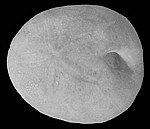 |
 |
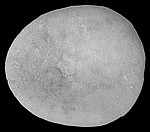 |
|
Petalobrissus trigonopygus (Cotteau, 1864) - Turonien moyen, Atlas, Maroc, 35 mm |

Essai de nomenclature raisonnée des échinides, p.349
|
Genre : PROCASSIDULUS Lambert & Thiery, Classif. Echin. Atélostomes, p.33 ; 1918 Test ovalaire, linguiforme, peu renflé en dessus et avec face inférieure à peu près plane ; floscelle très développé ; périprocte arrondi ou ovale s'ouvrant au dessus d'une aréa plus ou moins déprimée ; pétales lancéolés, de médiocre largeur, égaux ; une zone sternale granuleuse. Type : P. lapiscancri Leske (Echinites), 1071, p.327 ; pl. 925, fig. 6-10, du Sénonien supérieur (Aturien), et du Maestrichtien. Synonymie : CASSIDULUS Lamarck, 734, p.348 ; 1801 (non Cassidula Humphrey, 1797). Le nom proposé par Lamarck, malgré sa terminaison masculine, est évidemment synonyme de Cassis, la terminaison féminine est simplement plus correcte. Nous regrettons d'ailleurs beaucoup la disparition d'un nom de genre anciennement connu et nous le remplaçons par un terme qui rappelle autant que possible l'ancien. |
![]()
Additamenta ad jacobi theodori Klein naturalem dispositionem echinodermatum, p.192
|
Echinites lapis Cancri. Tab. XLIX. Fig. 10. 11.
Hic cum praecedente oris fitu et ftructura congruit. Differt autem tefta obtufe ouata, conuexa, at minus gibba , vertice excentrico, quatuor poris perforato, ambalacris quinis petaloideis, biporofis, ouato lanceolatis, apice fiffis: ano fupra marginem teftae latiorem pofito, lineae fpatio a peripheria diftante, rotundo impreffo. In bafi plana, leuiffime excauata, tubercula circulis cincta, per féries obliquas dispofita laterales partes occupant, area media nuda. Os non in centro, fed extremitati anguftiori paullo magis vicinum. Coloris albo flauefcentis tefta calcareo fpatofa eft: ex Heluetia Echiniten hunc allatum accepi, Similis eft forma quodam modo lapidi, oculus Cancri dicto, quem quiuis facile nouerit. Ideoque nomen hoc triuiale dedi. planche XLIX (extrait)
|
| Procassidulus lapiscancri (Leske, 1778) - Maastrichtien, Eben Emael, Belgique, 16 et 13mm |
![]()
Echinides du département de la Sarthe considérés au point de vue zoologique et stratigraphique, p.420
|
N° 145. Cassidulus Ligeriensis, Cotteau, 1869, pl. LXV, fig. 8-11. Espèce de taille moyenne, oblongue, arrondie en avant, un peu dilatée et sub-tronquée en arrière ; face supérieure renflée surtout en avant, légèrement amincie dans la région postérieure ; face inférieure presque plate, sub-carénée sur les bords. Sommet excentrique en avant. Etoile ambulacraire courte, se prolongeant à peine au-delà du tiers de l'espace compris entre le sommet et l'ambitus. Zones porifères larges, formées de pores inégaux, unis par un sillon très distinct ; la zone interporifère est étroite et à peine lancéolée. Tubercules petits, abondants, épars, scrobiculés. Péristome presque central, pentagonal, entouré d'un floscelle apparent. Périprocte un peu allongé, s'ouvrant à moitié environ de l'espace comppris entre l'appareil apical et le bord postérieur, à la partie supérieure d'un sillon qui se prolonge jusqu'à l'ambitus, en s'évasant et s'atténuant. Hauteur, 8 millim. ; diamètre transversal, 16 millim. ; diamètre antéro-postérieur, 18 millim. Rapports et différences. - Cette espèce offre, au premier aspect, beaucoup de ressemblance avec le Cassidulus lapis-cancri de la craie supérieure de Maëstricht. Certains auteurs, lorsqu'ils ont signalé la présence du Cassid. lapis-cancri dans le bassin de la Loire, ont été, suivant toute probabilité, trompés par cette ressemblance plus apparente que réelle : les deux espèces m'ont paru bien distinctes, et le Cassid. Ligeriensis, lorsqu'on l'étudiera avec soin, sera toujours reconnaissable à sa taille un peu plus forte, à sa face supérieure moins haute, moins rapidement déclive sur les côtés et plus amincie en arrière, à son étoile ambulacraire relativement moins développée, à son périprocte plus allongé et muni d'un sillon anal qui s'évase en se rapprochant du bord, sillon qui fait toujours défaut dans les exemplaires du Cassid. lapis-cancri. |
Localités. - Luynes (Indres-et-Loire). Très rare. Etage turonien. Collection Guillier. Explication des figures. - Pl.LXV, fig. 8, Cassid. Ligeriensis, vu de côté ; fig. 9, le même, vu sur la face sup. ; fig. 10, le même, vu sur la face inf. ; fig. 11, étoile amul. grossie.
Planche LXV, fig.8-11, d'après Cotteau & Triger
|
| Procassidulus ligeriensis (Cotteau, 1869), Turonien moyen, Cravant-lès-Coteaux, Indre & Loire, 16 mm |
| Procassidulus ligeriensis (Cotteau, 1869), Turonien moyen, Indre & Loire, 14 mm |
| Procassidulus ligeriensis (Cotteau, 1869), Turonien moyen, Cravant des Côteaux, Indre & Loire, 14 mm |

Diagnose originale du genre par d'Orbigny
Paléontologie française, terrains crétacés, tome VI, p.323.
|
5e Genre, Rhynchopygus, d'Orb., 1855. Nucleolites (pars), Desmoulins, 1837. Cassidulus, Agassiz, 1847. Caractères. Coquille ovale, déprimée, à sommet central, convexe en dessus, concave en dessous. Bouche pentagonale, un peu excentrique en avant, placée au milieu d'une surface concave, entourée de cinq rosettes de pores et de cinq tubercules buccaux bien circonscrits, mais sans ondulations ni sillons autour. Anus supérieur, ovale ou oblong transversalement, entouré d'une arée et d'une partie saillante supérieure. Ambulacres subpétaloïdes, étroits et longs, à zones inégales : les pores externes les plus longs, les autres simples. Tubercules serrés, égaux et petits en dessus, plus grands et plus inégaux en dessous. Rapports et différences. Ce genre, par son dessous concave, se rapproche à la fois des Pygorhynchus, et des Echinobryssus, mais il se distingue du premier et même de tous les genres de la famille, par son anus transverse placé sous une saillie supérieure. Ce caractère, ainsi que le dessous concave, l'éloigne des Cassidulus à dessous plat et anus ovale. Dans tous les cas, il ne peut rester avec les Cassidulus où M. Agassiz l'avait laissé, ni avec les Nucleolites Echinobryssus de Breynius, où M. Desmoulins l'a classé. |
La seule espèce bien caractérisée est de l'étage sénonien. Peut-être doit-on rapporter à ce genre le Cassidulus Guadalupensis de M. Dussaigne ; Bulletin de la soc. Géol., 1847, qui est fossile dans l'étage contemporain de la Guadeloupe. Ce serait alors le Rhynchopygus Guadalupensis, d'Orb., 1855. Mais nous ne le connaissons pas en nature. |
![]()
|
LXVI. CASSIDULUS LAMK. Marmini Agass. - R 45. - Nucleolites Marmini Desml. Tabl. syn. p.360. - L'anus est recouvert d'un gros bourrelet en forme de lèbre dilatée transversalement. De la montagne de Saint-Pierre de Maëstricht. Calc. à baculites d'Orglande, Angleterre. Cr. de Port de Léna. - Michelin, sir Philippe Egerton, Desmoulins. |
|
N° 2224. Rhynchopygus Marmini, d'Orb. Pl. 927. Nucleolites Marmini, Desmoulins, 1837. Etudes sur les Ech., p.360, n°21. Cassidulus Marmini, Agassiz, 1847. Cat. rais., p.99 (Modèles R, 45.) Id., d'Orb., 1847. Prod., 2, p.271 ; étage 22e, n°193 Dimensions. Longueur totale, 17 millimètres. Par rapport à la longueur : largeur, 85 centièmes ; hauteur, 50 centièmes. En décrivant ce genre, nous avons décritla seule espèce certaine du genre ; nous n'en répéterons donc pas les caractères. (NDLR : cf. supra) Histoire. Citée, sans description, sous le nom de Nucleolites Marmini, par M. Desmoulins, en 1837, cette espèce a été placée dans le Catalogue raisoné de M. Agassiz (en 1847) dans son genre Cassidulus, quoiqu'elle n'en eût pas les caracètres généraux. |
Localité. Elle est spéciale à l'étage sénonien. Nous l'avons recueillie aux environs d'Orglande (Manche) et à Tours (Indre-et-Loire). M. Desmoulins l'a rencontrée au port de Léna (Dordogne). Elle se trouve encore en Angleterre et à Maestricht. Explication des figures. Pl. 927, fig.1, grandeur nateurelle ; fig. 2, coquille grossie, vue en dessous ; fig. 3 ; dessous ; fig. 4, profil longitudinal ; fig. 5, profil transversal, du côté de l'anus ; fig. 6, ambulacres plus grossis ; fig. 7, rosette buccale plus grossie. De notre collection. Planche 927 d'après d'Orbigny |
|
|
http://coldb.mnhn.fr/catalognumber/mnhn/f/r62504 spécimen MNHN.F.R62504 crédit RECOLNAT (ANR-11-INBS-0004) Jocelyn FALCONNET d'Orgigny, p. 324 pl. 927 fig. 1 à 7 |
|
|
|
|
|
http://coldb.mnhn.fr/catalognumber/mnhn/f/j01644 spécimen MNHN.F.J01644 crédit RECOLNAT (ANR-11-INBS-0004) Jocelyn FALCONNET Kier, p. 160 pl. 21 fig. 1 à 4 |
|
|
|
Rhynchopygus marmini (Agassiz in Ag. & de Loriol, 1847) - Campanien, Charente Maritime, France, 13 mm (coll. J.-F.D.) |
![]()
![]()
![]()
|
N° 9. Cassidulus lusitanicus, P. de Loriol, 1884. Pl. XXXIV, fig. 6. dimensions Longueur 8 à 10 mm. Largeur, par rapport à la longueur 0,90 à 1,00 Hauteur id. id. 0,50 à 0,57 Espèce de petite taille, généralement très élargie, souvent aussi large que longue, et assez épaisse, arrondie en avant, dilatée et un peu rostrée en arrière. Face supérieure plus ou moins élevée, toujours très convexe, mais uniformément, sans être relevée sur le faîte ; un peu en arrière de l'apex, qui est légèrement excentrique en avant, elle s'abaisse et se tronque assez brusquement. Face inférieure excavée, un peu relevée en arrière dans l'aire interambulacraire impaire. Pourtour arrondi ; un angle assez indiqué marque en général le commencement du rétrécissement de la région postérieure. Appareil apical un peu excentrique en avant. Le corps madréporiforme, un peu en forme de bouton, occupe tout le centre, et il m'est impossible de distinguer les autres plaques génitales, non plus que les pores génitaux ; les pores ocellaires sont par contre assez visibles. Ambulacres relativement courts, à peu près égaux entre eux, les deux antérieurs pairs seulement, un peu plus longs que les autres, comptent dans chaque zone porifère 14 à 18 paires de pores fort petits et non conjugés par un sillon. Tous les cinq sont fort étroits et très peu resserrés à leur extrémité ; la zone interporifère est étroite, un peu plus large seulement que l'une des zones porifères. Péristome un peu excentrique en avant, pentagone, entouré d'un floscelle très distinct ; les cinq bourrelets arrondis et bien accentués sans être très saillants ; les phyllodes longs, larges, et très distincts. Périprocte ouvert à une assez faible distance de l'appareil apical, au sommet de la brusque déclivité de la face postérieure, à l'origine d'un sillon assez marqué qui n'entrave pas l'extrémité du rostre. |
Tubercules nettement scrobiculés, extrêmement petits et assez écartés à la face supérieur, très serrés au pourtour, plus accentués à la face inférieure, mais de plus en plus écartés aux abords du péristome. Une bande lisse, c'est-à-dire sans tubercules, couverte de granules seulement, existe au milieu de la face inférieure, mais elle est peu étendue. Rapports et différences. Cette jolie petite espèce ressemble un peu au Cassidulis (sic) lapis cancri, elle en diffère par son ensemble plus élargi, sa face supérieure plus uniformément convexe, non relevée sur le faîte, par ses ambulacres bien plus étroits et moins pétaloïdes, son périprocte plus rapproché du sommet et sur une déclivité plus abrupte, sa face inférieure plus évidée, les bourrelets de son péristome moins renflés. Localité. Barçoico près Sargento Mor. (Portugal). Cénomanien. Collection de la section géologique du Portugal, à Lisbonne.
Planche XXXIV, fig. 6 d'après de Loriol |
Rhynchopygus lusitanicus (de Loriol, 1884) - Turonien, Pugnadoresse, Gard, 9 mm |
Rhynchopygus lusitanicus (de Loriol, 1884) - Turonien, Gard, France, 10 mm |
Rhynchopygus lusitanicus (de Loriol, 1884) - Turonien, Pougnadoresse, Gard, France, 13 mm |
![]()
|
N° 364. Pygorhynchus Savini, Cotteau, 1894. Pl. 377, fig. 1-7. Espèce de petite taille, allongée, étroite et arrondie en avant, un peu dilatée en arrière. Face supérieure renflée, déclive sur les côtés, ayant sa plus grande hauteur dans la région postérieure qui s'abaisse ensuite obliquement jusqu'au bord. Face inférieure subpulvinée, un peu excavée dans le sens longitudinal, arrondie sur les bords. Sommet ambulacraire excentrique en avant. Aires ambulacraires pétaloïdes, lancéolées, effilées et presque formées à leur extrémité, inégales, les aires paries antérieures un peu plus courtes que les autres. Zones porifères assez larges, formées de pores inégaux, les externes allongés, les internes arrondis, sans que, cependant, la différence soit bien sensible, unis par un sillon à peine apparent. Zone interporifère un peu plus large que l'une des zones porifères. Dans chacune des aires ambulacraires, les zones porifères sont d'égale étendue. L'étoile ambulacraire n'est pas très développée, et les zones porifères cessent d'être pétaloïdes à une assez grande distance du bord. Tubercules abondants, épars, scrobiculés, finement crénelés et perforés, petits à la face supérieure, un peu plus gros et plus espacés aux approches du péristome, laissant une bande à peu près dépourvue de granules qui s'étend du bord postérieur au péristome. Au lieu de tubercules, cette bande paraît marquée de petites impressions. Péristome pentagonal, allongé, entouré d'un floscelle apparent, avec protubérances bien marquées. Périprocte transverse, s'ouvrant à la face postérieure, au-dessus du bord et recouvert par une légère expansion du test. Hauteur, 9 millimètres ; diamètre antéro-postérieur, 18 millimètres ; diamètre transversal, 14 millimètres. Individu jeune : hauteur, 7 millimètres ; diamètre antéro-postérieur, 13 millimètres ; diamètre transversal, 11 millimètres et demi. |
Rapports et différences. - Tout en plaçant cette petite espèce parmi les Pygorhynchus, nous devons reconnaître qu'elle s'en éloigne un peu par sa forme allongée, obliquement déclive sur les côtés et amincie en arrière ; par son péristome allongé et muni d'un floscelle très apparent ; par la bande lisse placée entre le bord postérieur et le péristome, et marquée çà et là de petites impressions au lieu de tubercules ; par sa face inférieur longitudinalement excavée et pulvinée sur les bords. Quelques-uns de ces caractères rapprochent cette espèce des Cassidulus, mais la forme de son péristome transverse et non allongé empêche de la réunir à ce genre et notamment au C. ovalis, de Boussan (Haute-Garonne). Localité. - Barroubio, près Saint-Chinien (Héraul). Eocène moyen. Coll. Savin. Explication des figures. - Pl. 377, fig. 1 , P. Savini, vu de côté ; fig. 2, face supérieure ; fig. 3, face inférieure ; fig. 4, région antérieure ; fig. 5, région postérieure ; fig. 6, appareil apical et aire ambulacraire antérieure, grossis ; fig. 7, portion de la face inférieure, grossie. Planche 377, fig. 1-7 d'après Cotteau |
Rhynchopygus savini (Cotteau, 1894) - Ilerdien, Aude, France, 11 mm |

Paléontologie française, terrians crétacés, tome VI, p.331
|
7e Genre, Stigmatopygus, d'Orb.,18553 Cassidulus, Forbes (non Lamarck), Pygorhynchus (pars), Agassiz. Coquille ovale, élevée, à sommet central ou excentrique en avant, convexe en dessus, plane en dessous. Bouche pentagonale, un peu excentrique en avant, placée au milieu d'une surface plane et entourée de cinq tubercules buccaux et de cinq rosettes de pores très-prononcées, sans sillons ni ondulations autour. Anus pyriforme, longitudinal, commençant à la partie la plus élevée par une sorte de fente qui s'élargit peu à peu et se termine inférieurement par une partie ovale, arrondie. Il est placé obliquement en dessus et assez éloigné du bord. Ambulacres pétaloïdes, peu inégaux, très-courts, s'achevant insensiblement loin du bord, formés de zones inégales, dont l'extérieure munie de pores longs obliques, et l'intérieure, de pores simples. Tubercules petits et serrés en dessus, plus grands et inégaux en dessous. Rapports et différences. Ce genre est voisin des Cassidulus par son dessous plan, ses rosettes et tubercules de pores, ainsi que par son ensemble, mais il s'en distingue nettement par son anus pyriforme, allongé, prolongé en une fente en dessus. Ce caractère, ainsi que le dessous plan, le sépare nettement des Pygorhynchus, et des Echinobrissus. |
Histoire. La seule espèce qui fût connue avant nos recherches fut classée par M. Forbes dans le genre Cassidulus, dont elle diffère complètement par son anus. M. Agassiz l'a classée dans ses Pygorhynchus, qui diffèrent encore plus par la forme de l'anus et par le dessous concave. Nous y ajoutons une espèce nouvelle, et nous en formons un nouveau genre. Les deux espèces connues sont de l'étage sénonien. L'une du bassin pyrénéen en France, l'autre de Pondichéry, dans l'Inde. C'est encore un des nombreux faits sur l'identité de la faune, aux mêmes époques géologiques, sur toutes les parties du globe à la fois.
|
Essai de Nomenclature raisonnée des échinides, p.363
|
Genre : STIGMATOPYGUS d'Orbigny, 1071, p. 331 ; 1855 Test clvpéiforme, renflé en dessus. plat en dessous, avec bords anguleux ; pétales inégaux, les postérieurs un peu plus étroits que les autres ; péristome central, à floscelle très développé ; périprocte lagéniforme. dans un sillon qui s'étend jusqu'au bord. Type. S. galeatus d'Orbigny, 1071, p. 332; pl. 928, du Sénonien des Charentes. SYNONYMIE'. : CYRTOMA M' Clelland, 253, p.185 ; 1840 (non Meigen, 1824) — PLATYPYGUS de Loriol, 864, p. 18 ; 1902 (non 1oew,1844). |
![]()
Echinides fossiles de l'Algérie, p.162
|
CASSIDULUS LINGUIFORMIS,
Peron et Gauthier, 1881. ECHINOBRISSUS CASSIDULIFORMIS, Munier-Chalmas. Ext. de la miss. aux Chotts tunisiens, p. 66, 1881.
Espèce de grande taille, relativement aux autres du même genre, beaucoup plus longue que large, à côtés presque parallèles, arrondie en avant, subtronquée en arrière, convexe, mais peu élevée à la partie supérieure, plate en dessous. Sommet excentrique eu avant. Appareil apical peu développé,. trapézoïde, offrant quatre pores génitaux, dont les postérieurs sont plus écartés que les autres, et cinq pores ocellaires portés par des plaques extrêmement petites et s'intercalant dans les angles des autres. Le corps madréporiforme occupe le milieu. Ambulacres pétaloïdes, presque fermés à l'extrémité, semblables entre eux, mais inégaux, l'antérieur impair et les deux deux postérieurs étant à peu près de même longueur, les deux antérieurs pairs plus courts. Zones porifères assez larges; pores inégaux, les internes subarrondis, les externes plus allongé , acuminés et réunis aux autres par un sillon. Le milieu de l'ai: est plus large que l'une des zones porifères. Péristome excentrique en avant, pentagonal, à fleur de test. est entouré de cinq gros bourrelets, très saillants, et de phyllodes bien marqués, longs, en fer de lance, montrant deux rangées de pores conjugués, avec d'autres plus irréguliers au milieu. Une large bande lisse va du péristome au bord postérieur ; elle se prolonge aussi vers le bord antérieur, plus large, mais plus irrégulière, occupant ainsi toute la longueur de la face inférieure. Périprocte placé à la face postérieure, très bas, près du bord, dans un sillon peu étendu et peu profond. Dans un ou deux de nos exemplaires, le test a une tendance à se déprimer en cet endroit; niais cela n'existe pas pour la grande majorité des individus, dont la face postérieure devient seulement un peu plus déclive dans la région anale. Tubercules petits, scrobiculés, serrés, semblables pour la forme à ceux de toutes les cassidulidées, plus gros en dessous, surtout sur les bords de la bande lisse. Rapports et différences. — Dans notre notice stratigraphique, le Cassidulus linguiformis est appelé Echinobrissus cassiduliformis, et c'est d'après notre indication que M. Munier Chalmas l'a désigné sous ce nom. Nous étions alors indécis sur les rapports génériques de cette espèce, et la concordance de plusieurs de ses caractères avec ceux de nos Echinobrissus dordoniens, nous portait à les ranger dans le même genre. Depuis, l'étude plus approfondie de nos matériaux nous a conduits à considérer ces exemplaires comme des Cassidulus. En effet, ils ont deux particularités qui les distinguent des autres types recueillis dans les mêmei couches : le dessous est complètement plat, et cette face inférieure est traversée par une large raie lisse, qui s'étend du bord |
antérieur au bord postérieur. Il faut bien avouer que les Echinobrissus que nous avons décrits plus haut, avec leurs bourrelets et leurs floscelles péristomiques, leur sillon anal très court et éloigné de l'apex, ont singulièrement rétréci les limites qui séparent ce genre des Cassidulus ; méconnaître la valeur de l'aplatisse-nient de la face inférieure, c'était supprimer du même coup ce dernier genre, car il ne lui restait plus aucun caractère propre. Or, nous croyons qu'il est bon de maintenir le genre Cassidulus; les espèces qui y sont comprises ont certainement une physionomie autre que celle des Echinobrissus, et, bien «que nos matériaux dordoniens semblent présenter un trait d'union entre les deux genres, la science échinologique ne peut pas, dans l'état actuel, les confondre et en supprimer un. Le Cassidulus linguiformis est la plus grande espèce du genre. Il diffère de.ses congénères et notamment du C. elongatus qui en est voisin, par son sillon anal un peu plus allongé, par sa partie postérieure moins abrupte, par son apex plus excentrique en avant. Il est peut-être plus voisin encore du C. aequoreus Morton, ou du moins des figures données dans la Paléontologie française, qui diffèrent sensiblement de celle qu'on trouve dans l'ouvrage de Morton. Nos exemplaires sont plus longs et moins larges ; le bord postérieur est moins arrondi, le périprocte placé plus bas. Localité. - Route de Medjès à Msilali. Dordonien moyen. Assez rare. Le Cassidulus linguiformis a été aussi recueilli par M. Dru, au seuil de Kriz, dans les sondages des chotts tunisiens. Collections Peron, Gauthier, de la Sorbonne. Explication des figures. — Pl. XVII, lig. 7, Cassidulus linguiformis, de la collection de M. Peron, vu de profil ; fig. 8, le même, face sup. ; fig. 9, autre exemplaire, de la collection Peron, face inf. ; fig. 10, face inf. grossie. Planche XVII (extrait) |
Stigmatopygus linguiformis (Peron & Gauthier,1881) - Campanien, Missour, Maroc, 30 mm |
Stigmatopygus linguiformis (Peron & Gauthier,1881) - Mazastrichtien, Jebel Rawdah, Sultanat d'Oman, 30 mm coll. Joaquín Espílez |
Stigmatopygus linguiformis (Peron & Gauthier,1881) - Campanien, Missour, Maroc, 29 mm |
Stigmatopygus linguiformis (Peron & Gauthier,1881) - Campanien, Missour, Maroc, 26 mm |
Stigmatopygus linguiformis (Peron & Gauthier,1881) - Campanien, Missour, Maroc, 28 mm |
Stigmatopygus linguiformis (Peron & Gauthier,1881) - Campanien, Missour, Maroc, 27 mm |
![]()
|
Stigmatopygus pulchellus? sp. nov. Pl. 27, figs 1-8; Figs 69, 70 Types. Holotype BMNH EE4314, paratypes, BMNH EE3324-25, EE3329-30, EE3332-33. EE4312-13: all nine spécimens were used for the biometric analysis given helow in the description. Other material. In addition a further six specirnens were collected. Occurence. The species has been Pound only at Jehel Rawdah, section 2. al the folknving horizons- bed 14 (6): bed 19 (1); bed 21 (7); loose in scree, derived trom beds 14-21 (1). Description. Tests are elongate oval in outline, with a rounded anterior and a small posterior indentation (Pl. 28. figs 2-7). Tests range in length from 37 to 68 mm. Test width is 77-84% of test length (mean = 80%, SD = 1•9%. N = 9) and the widest point is slightly posterior of midlength. Test height is 41-56% of test length (mean = 47. SD 4,9%. N = 9). The test has a depressed profile with the highest point coincidental with the apical dis c and thus anterior of centre. There is a posterior notch marking the position of the periproct, and a simili heel underneath the periproct in profite (Pl 27, fig. 5). The apical disc lies anterior of centre, some 32-40% of test length from the antenor border (mean = 37%. SD = 3-4%, N=7). It appears to be tetrabasal. although the madrepores extend almost up tu the start of the gonopores (Fig. 70D). There is no evidence for sexuel dimorphism amongst the specimens to hand. The petals are bowed, and are widest about one third of their distance from the apex (PL 27, fig. 7). The anterior petal has columns of equal length and the inner series of pores are airnost straight. it is 22-27% of test length in Iength. The interporal zone is about twice as wide as the pore zone. Pelal III is significantly longer than the rest. The petals in ambulacra II and IV are howed and converge distally but remain open. The pore columns in the posterior petals are signe cantly different in Iength, with the inner series some 8-10 pore-pairs shorter than the outer column in larger specimens. These petals are also the narrowest. All pores helow the pet atr are single. Towards the prtidyomr phyllodes are well-developed. and expand as an open "V" (PI. 27. fig. 8). There are five or six pores in each series along the margin with an additional one, or rarely two inner pores al the (listai end of the phyllodes (Fig. 70C). Usually there is only one occluded plate in each phyllode, ail other plates extending from the adradial to the perradial suture. The first ambulacral plates are long and boot-shaped, with buccal pores that are much smaller than those composing the remainder of the phyllodes (Fig. 70C). Sphaeridial pits occur on each plate dose to the midline, forming an alternating series, 4 or 5 per column. The phyllodes lie sunken relative to the surrounding test with buccal pores on the adorai walls of this depression, rather than in the peristomial well. The peristorne is pentagonal and either equilateral or slightly longer than Ovide (PI. 27, fig. 8). Bourrelets are well developed, being straight-sided to weakly wedge-shapecl in outline and projecting upwards strongly. They do not, however, project over the peristorne. The periproct is only just visible from above, being situated more or leu posteriorly (PI. 27. figs 6, 7). h is triangular in shape with an upper pinched portion and a broader, more rounded louver portion. It is typically slightly taller than broad. There is a subanal platform that extends as an invaginated floor to the periproct. There is a slight aboral lip to the periproct. h lies 21-34% above the base of the test (mean = 27%, SD = 5•5%. N = 7). Tuberculation is fine and uniform aborally. slightly coarser orally. There is a very broad and well developed naked zone running the length of the posterior interambulacrum. smaller naked zone is also present anteriorly slang the midline. These zones are covered in a very fine granulation but tippear smooth to the naked eye. Remarks. This is a very distinct species, on account of its asymmetric posterior petals and keyholeeshaped periproct. Smail forms resemble Petalobrissus linguiformis (Peron & Gauthier), but are easily distinguished from that species by their phyllode structure and periproct shape. P. linguiformis has a longitudinal periproct with a short parallel-sided anal sulcus, and also has much better developed phyliodes, with a separate series of inner occluded plates. The new species undoubiedly cornes closent to the type species of Stigmatopygus, S. galeatus d'Orbigny from the late Cretaceous of Angouleme, France. Both have a very similar test shape and periproct position and shapc. Unfortunately, this species is very poorly known, the original description and figures being quite inadequate by today's standards. In particular its phyllode structure is unreported. Kier (1962) described the phyllode structure of another species S. lamberti Bessairie, from the Campanian of Madagascar, but this differs in heing much wicler and taller, with a mue larger periproct. It also has better developed phyllodes, which are clearly bo•ed and comprise an outer series of some 12 pores and an inner series of 4 or 5 pores. I am therefore not certain that S. lamberti is truly congeneric with the type species S. galeatus. Only re-study of the type (apparently lost), or topotype material will solve the problem. If the phyllode structure of S. galeatus is similar to that of S. pulhellus, then S. la4berti should he transferred to a new genus. On the other hand. if S. galeatus proves to have a phyllode structure similar to that of S. lamberti, then S. pulchellus should he made the type of a new genus. Consequently. S. pulchellus can only tentativcly hie placed in the genus Stigmatopygus. S. galeatus can he distinguished from S. pulchellus by the tact that its petals are illustrated as being of equal length. figs. 71-72 & planche 27 (extraits) |
Stigmatopygus pulchellus Smith,1995 - Maastrichtien, Jebel Rawdah, Sultanat d'Oman, 62 mm |

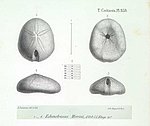
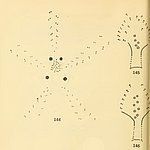
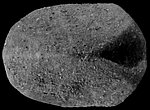

,%20apical,%20Maastrichtien,%20Eben%20Emael,%20Belgique,%2026%20mm.jpg)
,%20oral,%20Maastrichtien,%20Eben%20Emael,%20Belgique,%2026%20mm.jpg)

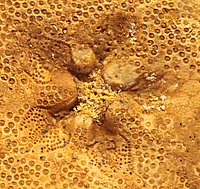
%20apical%20Maastrichtien%20Jebel%20Rawdah%20Hatta%20Oman%2015%20mm.jpg)
%20ambital%20Maastrichtien%20Jebel%20Rawdah%20Hatta%20Oman%2015%20mm.jpg)
%20periprocte%20Maastrichtien%20Jebel%20Rawdah%20Hatta%20Oman%2015%20mm.jpg)
%20oral%20Maastrichtien%20Jebel%20Rawdah%20Hatta%20Oman%2015%20mm.jpg)
,%20apical,%20Maastrichtien,%20Jebel%20Rawdah,%20Oman,%2017%20mm.jpg)
,%20ambital,%20Maastrichtien,%20Jebel%20Rawdah,%20Oman,%2017%20mm.jpg)
,%20periprocte,%20Maastrichtien,%20Jebel%20Rawdah,%20Oman,%2017%20mm.jpg)
,%20oral,%20Maastrichtien,%20Jebel%20Rawdah,%20Oman,%2017%20mm.jpg)
,%20apical,%20Maastrichtien,%20Jebal%20Rawdah,%20Oman,%2028%20mm.jpg)
,%20detapical,%20Maastrichtien,%20Jebal%20Rawdah,%20Oman,%2028%20mm.jpg)
,%20ambital,%20Maastrichtien,%20Jebal%20Rawdah,%20Oman,%2028%20mm.jpg)
,%20periprocte,%20Maastrichtien,%20Jebal%20Rawdah,%20Oman,%2028%20mm.jpg)
,%20oral,%20Maastrichtien,%20Jebal%20Rawdah,%20Oman,%2028%20mm.jpg)
,%20apical,%20Maastrichtien,%20Djebel%20Rawdah,%20Oman,%2026%20mm.jpg)
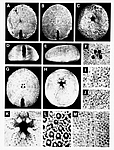

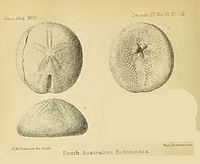
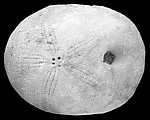


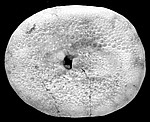
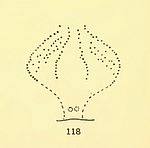
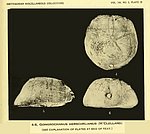

,%20apical,%20Sénonien,%20Arialur,%20Tamil%20Nady,%20Inde,%2052%20mm.jpg)
,%20detapical,%20Sénonien,%20Arialur,%20Tamil%20Nady,%20Inde,%2052%20mm.jpg)

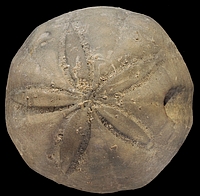
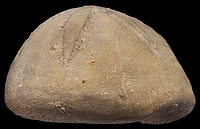
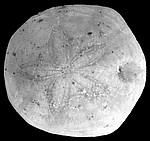


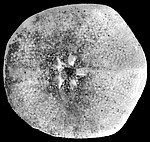
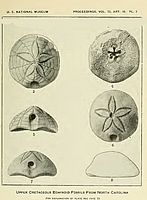
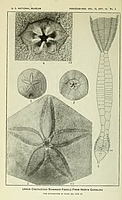
,%20apical,%20Caroline%20du%20Nord,%20USA,%20Maastrichtien,%2043%20mm.jpg)
,%20apical,%20Maastrichtien,%20Prairie%20Bluff%20fm,%20Nixon%20sand%20member,%20Pontotoc,%20Mississippi,%20USA,%2019%20mm.jpg)
,%20oral,%20Maastrichtien,%20Prairie%20Bluff%20fm,%20Nixon%20sand%20member,%20Pontotoc,%20Mississippi,%20USA,%2019%20mm.jpg)
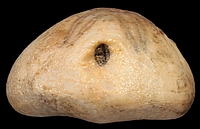
,%20ambital,%20Santonien,%20Eutaw%20Formation,%20Montgomery%20Cty,%20alabama,%20USA,%2026%20mm.jpg)
,%20periprocte,%20Santonien,%20Eutaw%20Formation,%20Montgomery%20Cty,%20alabama,%20USA,%2026%20mm.jpg)
,%20oral,%20Santonien,%20Eutaw%20Formation,%20Montgomery%20Cty,%20alabama,%20USA,%2026%20mm.jpg)
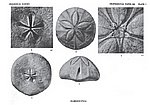
,%20periprocte,%20Blufftown%20formation,%20Santonien%20superieur,%20Hatchechubee,%20russel%20Cty,%20Alabama,%20USA,%2043%20mm.jpg)

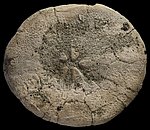
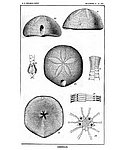

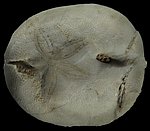
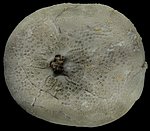
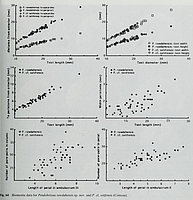
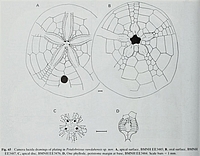
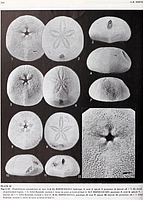
,%20oral,%20Maastrichtien,%20Jebal%20Rawdah,%20Jordanie,%2016%20mm.jpg)
,%20periprocte,%20Maastrichtien,%20Jebal%20Rawdah,%20Jordanie,%2025%20mm.jpg)
,%20periprocte,%20Maastrichtien,%20Jebal%20Rawdah,%20Jordanie,%2018%20mm.jpg)
,%20oral,%20Maastrichtien,%20Jebal%20Rawdah,%20Jordanie,%2018%20mm.jpg)
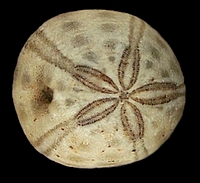
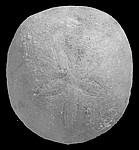

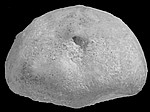
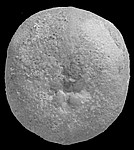


,%20apical,%20Maastrichtien,%20Jebel%20Rawdah,%20près%20Hatta,%20Oman,%2018%20mm.jpg)
,%20ambital,%20Maastrichtien,%20Jebel%20Rawdah,%20près%20Hatta,%20Oman,%2018%20mm.jpg)
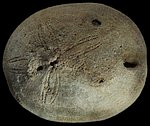
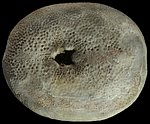

%20apical%20Turonien%20Moyen%20Atlas%20Maroc%2034%20mm.jpg)
%20detapical%20Turonien%20Moyen%20Atlas%20Maroc%2034%20mm.jpg)
%20ambital%20Turonien%20Moyen%20Atlas%20Maroc%2034%20mm.jpg)
%20periprocte%20Turonien%20Moyen%20Atlas%20Maroc%2034%20mm.jpg)
%20oral%20Turonien%20Moyen%20Atlas%20Maroc%2034%20mm.jpg)
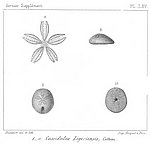
,%20periprocte,%20Turonien%20moyen,%20Cravant%20les%20Coteaux,%20Indre%20&%20Loire,%2016%20mm.jpg)
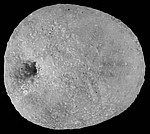

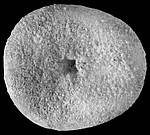
,%20periprocte,%20Turonien%20moyen,%20Cravant%20des%20Coteaux,%20Indre%20et%20Loire,%2014%20mm.jpg)



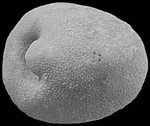
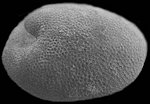

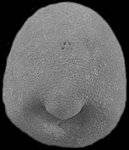
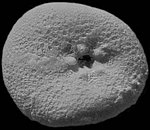
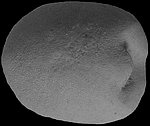
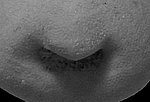
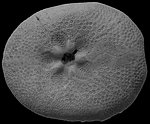
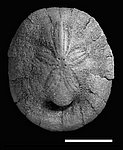
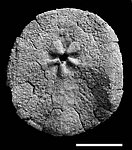

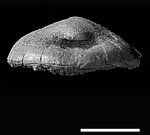

,%20periprocte,%20Pugnadoresse,%20Gard,%20Turonien,%209%20mm.jpg)
,%20oral,%20Pugnadoresse,%20Gard,%20Turonien,%209%20mm.jpg)
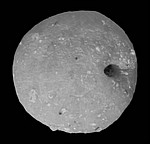

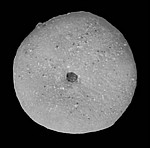
,%20periprocte,%20Turonien,%20Pougnadoresse,%20Gard,%2013%20mm.jpg)

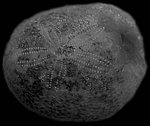
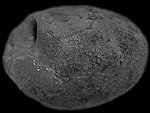
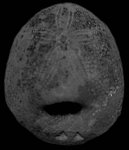
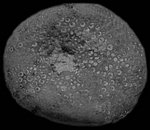
,%20apical,%20Campanien,%20Missour,%20Maroc,%2029%20mm.jpg)
,%20apical,%20Campanien,%20Missour,%20Maroc,%2026%20mm.jpg)
,%20apical,%20Campanien,%20Missour,%20Maroc,%2028%20mm.jpg)
,%20periprocte,%20Campanien,%20Missour,%20Maroc,%2027%20mm.jpg)
